No journey to Copenhagen is complete without a stroll along Nyhavn. You have probably seen Nyhavn countless times while searching for info about Denmark’s capital, but walking along the waterfront canal is an immersive experience. This 17th-century Copenhagen district magnetizes visitors and locals alike due to its garland of colorful houses and vibrant life.
To some, Nyhavn might look overly touristic, and its establishments are definitely pricier. However, Nyhavn is a must-see location, and you will probably stop more than once during your trip. I’ve been to Copenhagen twice, and I found myself walking along the waterfront promenades almost daily.
On my latest visit, I decided to dig deeper into the city’s iconic spot and present a photo report and background information to help you better understand its importance. Therefore, in the following lines, you’ll read some fascinating Nyhavn facts and get tips on how to make the most of it.
So, let’s start with the things you need to know about Nyhavn.
*Some links are affiliate links. It means that if you buy something, I might earn a small commission at no additional cost to you.
Nyhavn Guide: 8 facts about Copenhagen’s canal district
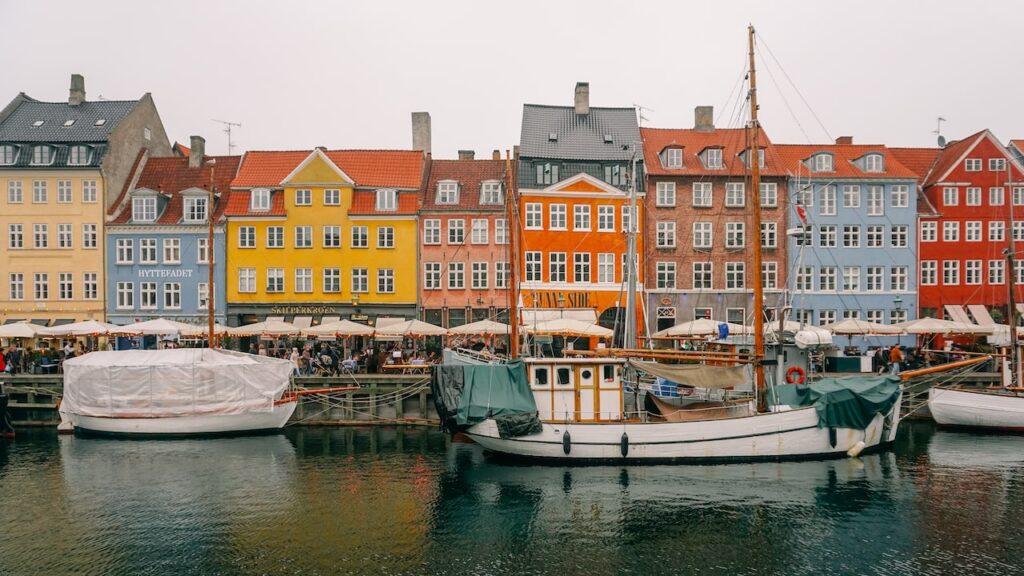
Walking around Nyhavn will expose you to Copenhagen’s 17th-century architecture. The district’s colorful houses and proximity to the sea create a unique combination. Although I didn’t have sunny days during my recent visit, I dare say that even the gloomy weather gave the port a particular atmosphere. Yes, it’s always better to visit cities when the sun shines, but the foggy days I spent in Copenhagen gave an interesting—and probably more accurate—impression of how life unfolds in the Danish capital.
So, let’s see now what makes Nyhavn unique.
Nyhavn stands for “New Harbor”
The name Nyhavn translates to new harbor or new port. Its construction started in 1670 under the reign of King Christian V. It took almost five years to be completed. Due to its densely built houses, people often assume it’s a relatively extended area. However, walking from edge to edge will take less than ten minutes; its length is approximately 500 meters, making it an easy walk.
To give you a better idea of its size, Nyhavn stretches between Kongens Nytorv (or King’s Square) and the Royal Danish Playhouse. And here’s an extra interesting fact about Nyhavn: its construction was carried out not only by Danish soldiers but also by Swedish prisoners of the 1658-60 war between Denmark and Sweden.
Last but not least, one more historical element decorates the new harbor: the Great Memorial Anchor (Danish: Mindeankeret). The anchor comes from the Frigate Fyn and serves as a memorial to the Danish Navy soldiers who lost their lives in WW II.
It wasn’t always a great attraction (at least not for all travelers)
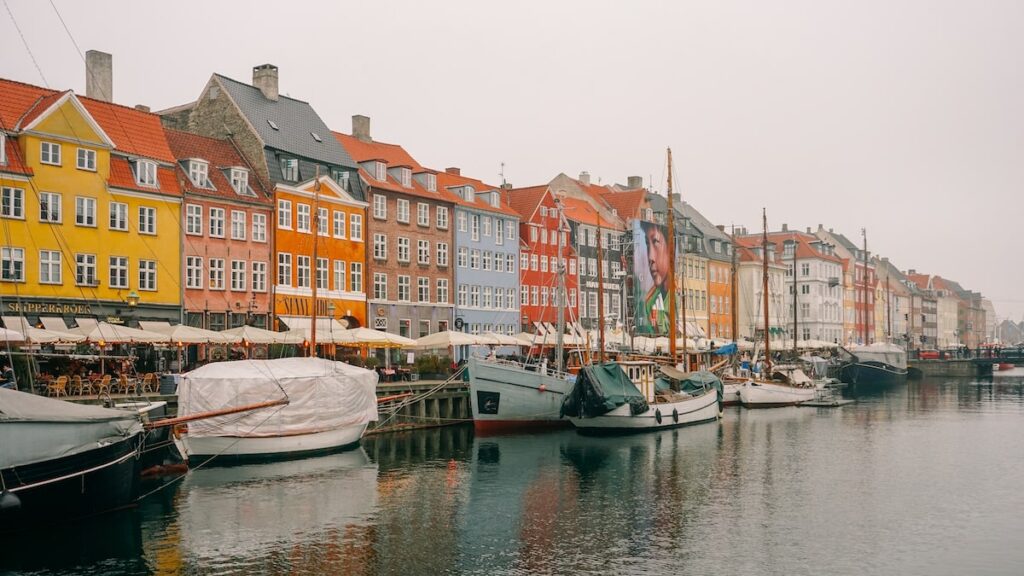
Sure, the brightly colored buildings have always stood in this spot. Constructed in the late 17th and early 18th centuries, the nowadays iconic houses definitely contributed to a brighter skyline. Add to that the stationed wooden ships—some boast a long history—and you have an image of how stunning this small district is.
However, up until the 1960s, Nyhavn was mainly known as a place for alcohol, where sailors and prostitutes somehow painted Nyhavn’s image to the outer world. However, this changed radically during the 60s, and Nyhavn never looked back. Nowadays, it is assumed to be a waterfront entertainment district with lots of bars, restaurants, and cafes.
And here’s a tip for keeping an eye on your budget: despite being Copenhagen’s most beautiful spot, it’s also more expensive than any other city location.
Hans Christian Andersen called Nyhavn home for many years
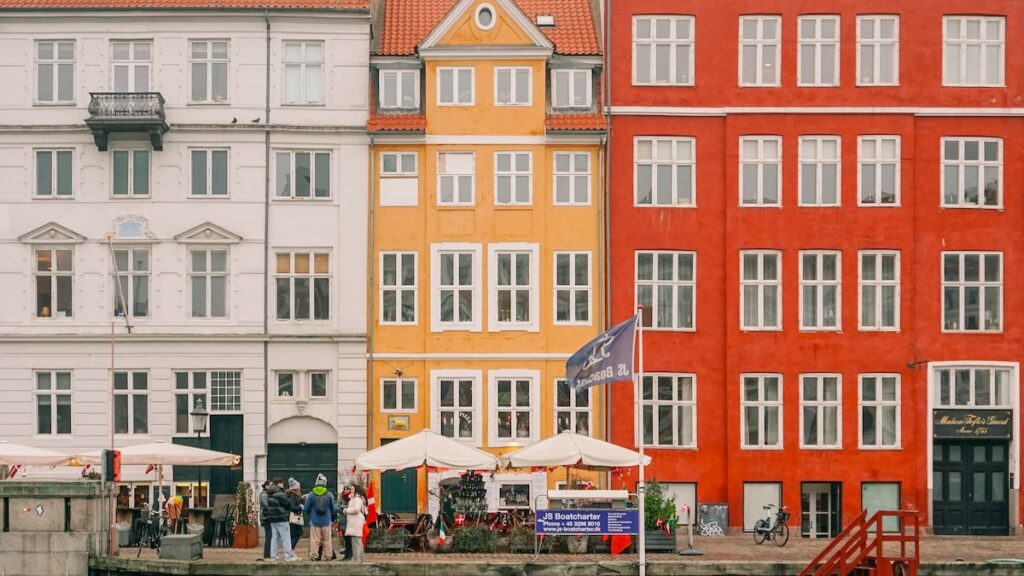
Apart from being Copenhagen’s most famous son, the great storyteller Hans Christian Andersen also called Nyhavn home. The writer’s work is omnipresent in the city, and if you stroll along the Nyhavn canal, you’ll also come across the townhouses where he lived and worked.
I think it deserves to pay tribute to Hans Christian Andersen by stopping in front of the houses he inhabited and reflecting on what he saw during his life. For example, Andersen lived on the second floor of No. 20 when he published his first fairy tales: The Tinderbox, Little Claus and Big Claus, The Princess and the Pea, and Little Idas Flowers. Nyhavn 20 is also known as Boel House, and there’s a sign commemorating the years Andersen lived here.
Andersen also lived at Nyhavn 67 between 1848 and 1865. Despite spending seventeen years at No. 67, the writer complained about the noise, proof that Nyhavn was always one of the epicenters of local life. Lastly, Andersen lived at Nyhavn 18 from 1871 almost until his death in 1875, next to his first home in No. 20. Nowadays, a Hans Christian Andersen souvenir shop can also be found at Nyhavn 18.
If you are up for a proper Hans Christian Andersen tribute, you can walk the waterfront promenade all the way to the Little Mermaid. This wonderful 2-km seaside route takes approximately twenty minutes.
The sunny side of Nyhavn -and the shady one
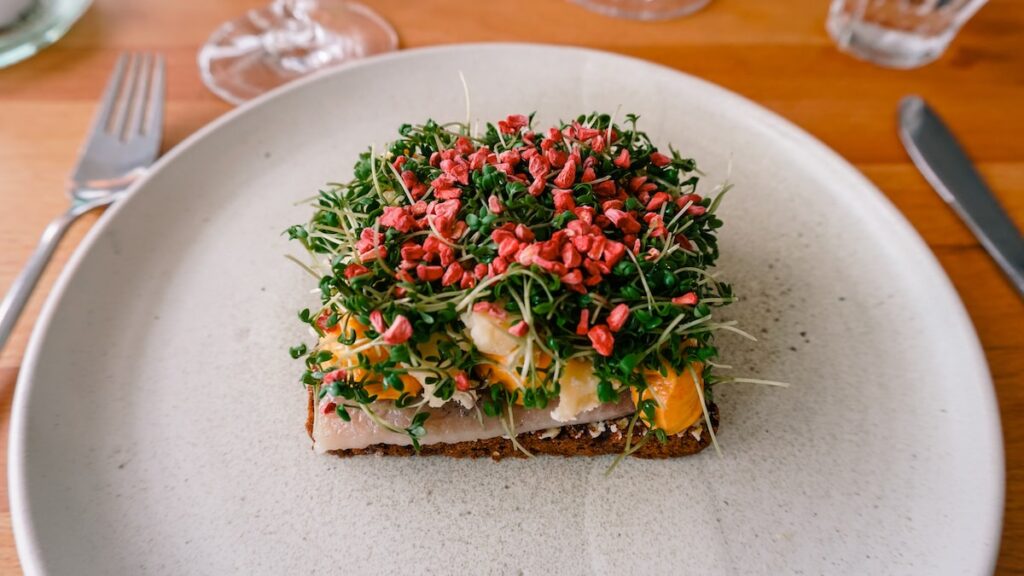
This is not a statement about social or even political matters. Nyhavn has indeed a side seen by the sun—the northern—and one that the sun doesn’t see—the southern. As you can easily imagine, the north side is the one that most people tend to visit because apart from the much-needed sun, it’s also where the cafes and restaurants are.
The shady side feels more residential, and although it’s usually overlooked, I found it charming. Most travelers tend to visit this side mainly to shoot photos of the brightly colored houses of the sunny side. However, apart from the views, on this side, you will also find Kunsthal Charlottenborg, hosting fine arts exhibitions, and the restaurant Judie, hosted on an old boat. In the latter, I had the best Smørrebrød during my trip -these are the delicious open-faced Danish sandwiches. But remember: that’s Nyhavn, and everything is even pricier.
At this spot, you’ll also find the first bridge across Nyhavn. Initially, it was made of wood, but in 1912, it was replaced by the one you can see today.
The oldest building and the longest bar
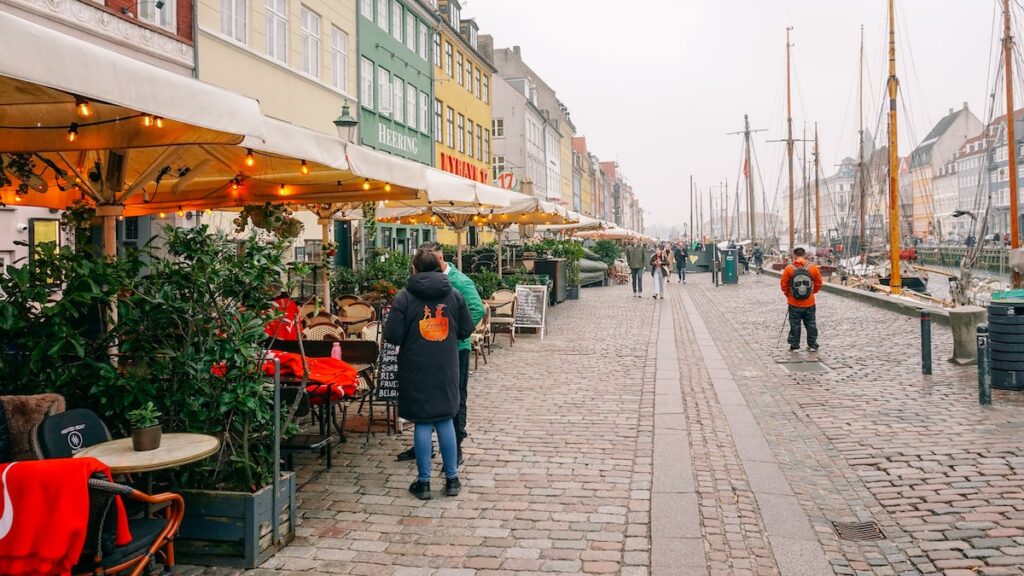
Since everything is about the new port’s history, one thing you need to know about Nyhavn is that its oldest building is No. 9. Dating back to 1681, Nyhavn 9 has remained intact through the centuries. There have been no changes throughout history, and it has kept its character without any modifications or reconstructions.
On the other hand, the term “the longest bar in Scandinavia” is probably a local invention. This doesn’t refer to a local establishment but to Nyhavn as a whole. You see, this seemingly endless garland of bars, restaurants, cafes, and even more bars gave the waterfront district this powerful nickname. Here, I should mention that some bars in Nyhavn supposedly operate 24/7.
The best canal tours start from Nyhavn
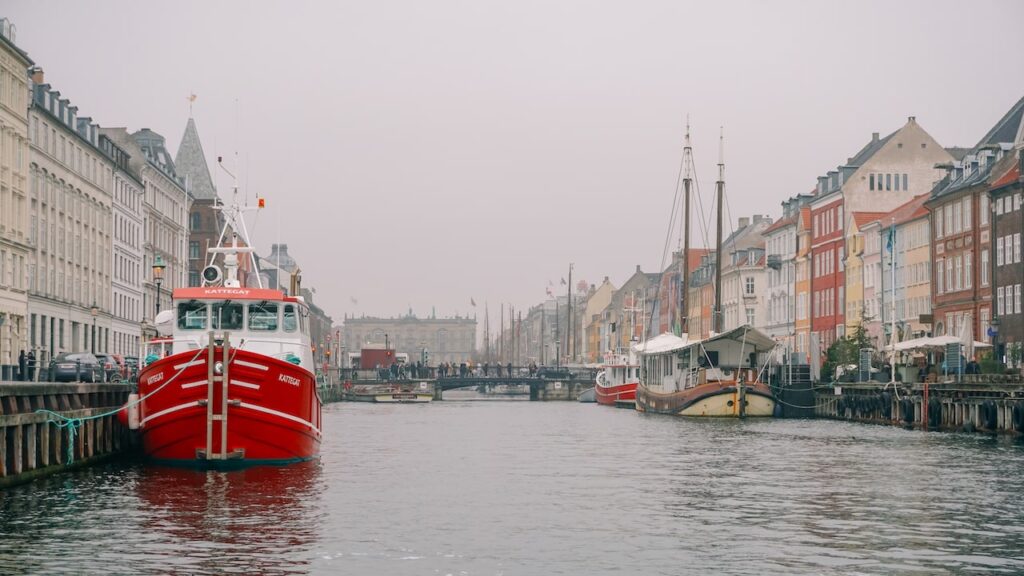
Hoping on a canal tour is always a good idea to get a better idea of city life and see Nyhavn from a different angle. The best canal tours start from here, and after exploring Copenhagen’s New Port on foot, it’s time to get on a boat. On my recent visit to Copenhagen, it was a must to see the city from the water, and I chose this boat tour.
I highly recommend it because apart from discovering different perspectives, you’ll also see the city’s canals. Moreover, leaving Nyhavn and returning after the tour’s conclusion back to it, will give you some great photos and impressions. Just make sure to dress warmly. I took the tour in the winter, and it was freezing. However, even during the summer, having a light jacket with you is a good idea because there seems to be a constant yet refreshing breeze in Copenhagen.
It is a Veteran Ship and Museum Harbor
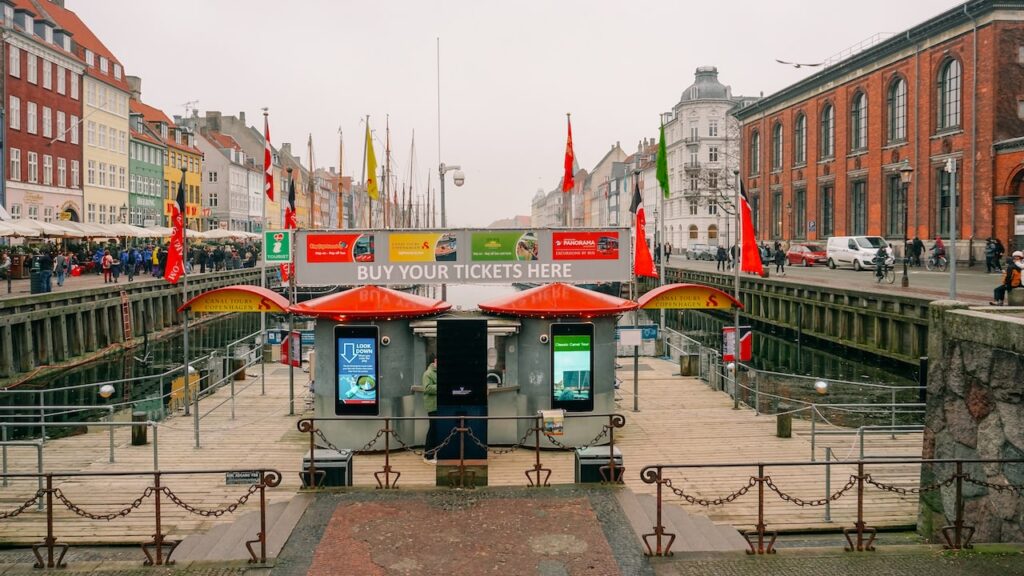
The 1960s brought several changes to Nyhavn, including a total makeover (you might even call it rebranding) that altered its character. Since 1977, the inner canal has hosted numerous old ships and vessels owned by the Danish National Museum. What I found fascinating is that most of the wooded ships are still usable.
Some of the boats are the Svalan af Nyhavn, Anna Møller, and Mi-Ra. Strolling along the promenade will give you countless images of lined ships in front of the colorful houses -so have your camera ready.
The oldest tattoo studio in the world
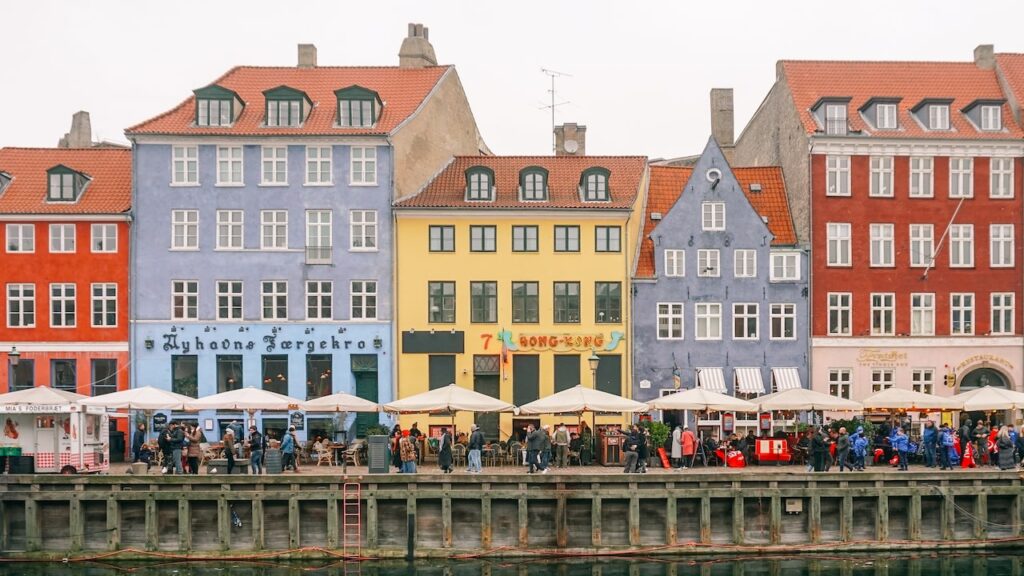
It might be hard to believe, but Copenhagen claims to host the oldest tattoo studio in the world. While this might be a fun fact about Copenhagen, it’s also a relatively bizarre Nyhavn fact. It’s at No. 17, on a yellow house in the corner. Its name is Tattoo Ole, and it has operated nonstop since 1884.
As if this isn’t odd and interesting enough, here’s one more fun fact: King Frederic IX got more than one tattoo there, and there’s a photo proving it. So, if you are wondering, when you see the inscription “The king’s tattoo artist” on its door, that’s the story behind it. Tattoo Ole has two small rooms in the basement of No. 17, and their minimum price is 1000 DKK (~135 euros or ~145 $).
If you love tattoos, here’s your chance to get one from the world’s most historical tattoo place.
Where to stay in Nyhavn Copenhagen
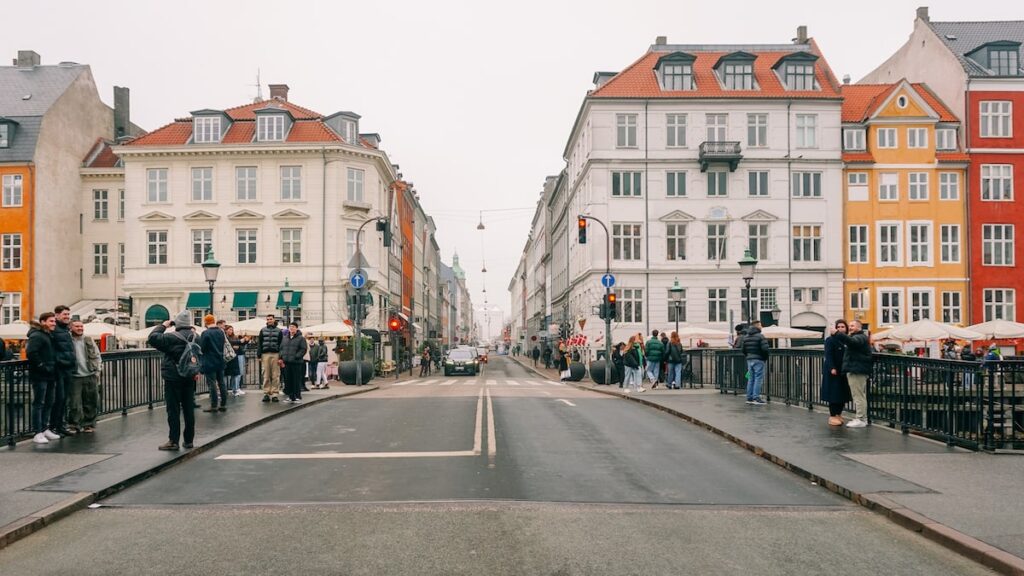
Nyhavn is by far the most prominent piece of real estate in town and one of the most desired accommodation locations for international travelers. There are a few places to stay in Nyhavn, but as I already wrote, be prepared for elevated prices. The location is prime, there’s life all day long, and the proximity to the city’s sights makes it unbeatable.
So, here are the best hotels in Nyhavn, Copenhagen.
71 Nyhavn Hotel. That’s hands down the best place to stay in the harbor and among the top accommodations in Copenhagen. The 71 Hotel is located on the canal’s edge and housed in two 19th-century converted warehouses. Close to every attraction in town and just a few meters from the canal tour’s starting point, that’s a great option for your stay. See prices and availability for the 71 Hotel here.
Hotel Bethel. Located on the waterfront promenade on the southern side of Nyhavn Canal, Hotel Bethel offers simple yet elegant rooms. It’s a great alternative if you want to keep your budget under control, and you’ll enjoy great harbor views from its windows. You can book a room with or without breakfast. See prices and availability for Hotel Bethel here.
Capsule Hotel 63. Close enough to the port but not straight at it, the Capsule Hotel 63 is a budget alternative. As its name suggests, it offers capsule rooms so that’s not for everyone. If you feel claustrophobic in tight spaces, don’t even consider it. However, if you are okay with having just a tight place to sleep, this is actually one of the cheapest hotels in Europe. Double-check if you are okay with it. See prices and photos of Capsule Hotel 63.
Modern 3-Bedroom Duplex Flat. Finally, this is a fantastic option if you’d rather have a private apartment. Located straight at the harbor and overlooking the Nyhavn Canal, this three-bedroom apartment has a private balcony and two bathrooms. See the 3-bedroom Duplex Flat.
A Travel Guide to Nyhavn: Conclusion
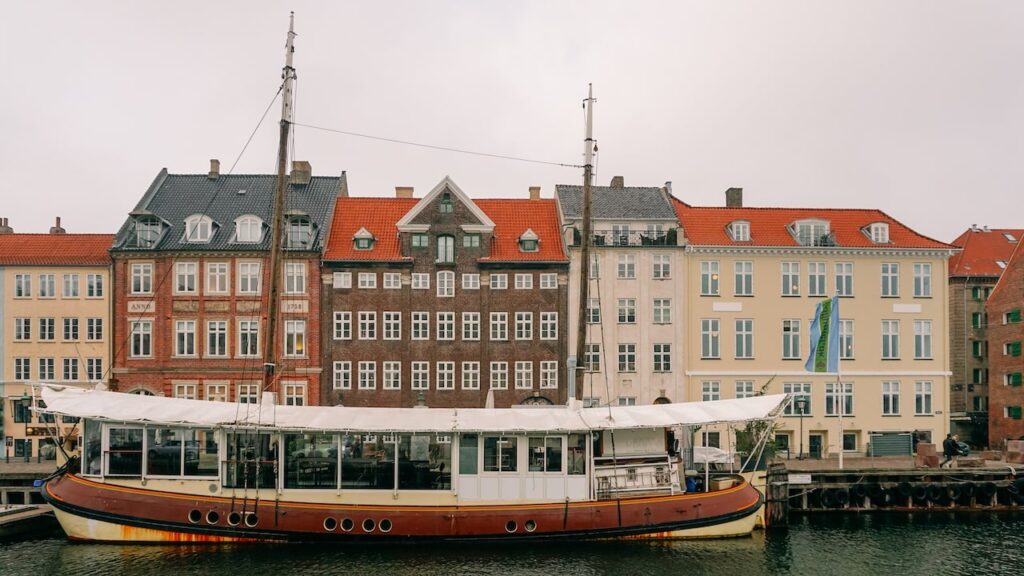
Nyhavn is an impressive district. Its proximity to the sea, paired with the colorful houses and the numerous cafes and restaurants, offers a fantastic vibe. Due to its location in the city center, the beautiful New Harbor is a must-see when in Copenhagen and a place to pause—lunch, dinner, or just a drink—it’s up to you.
Moreover, Nyhavn’s historical significance and the houses that Hans Christian Andersen inhabited give the area several layers of depth. Of course, you are here to enjoy and see local life unfold—and that’s why your camera roll will be full of stunning photos from the moment you step foot there. Last but not least, since the best canal tours start here, it is worth combining a boat trip with your visit to Nyhavn.
In my opinion, there are plenty of places to see in Copenhagen, and Nyhavn is definitely among the top. I found the combination of colorful architecture and laid-back atmosphere unbeatable, and that’s why I suggest walking more than once to its waterfront promenade.
More about Copenhagen: The Round Tower
Pin it for later
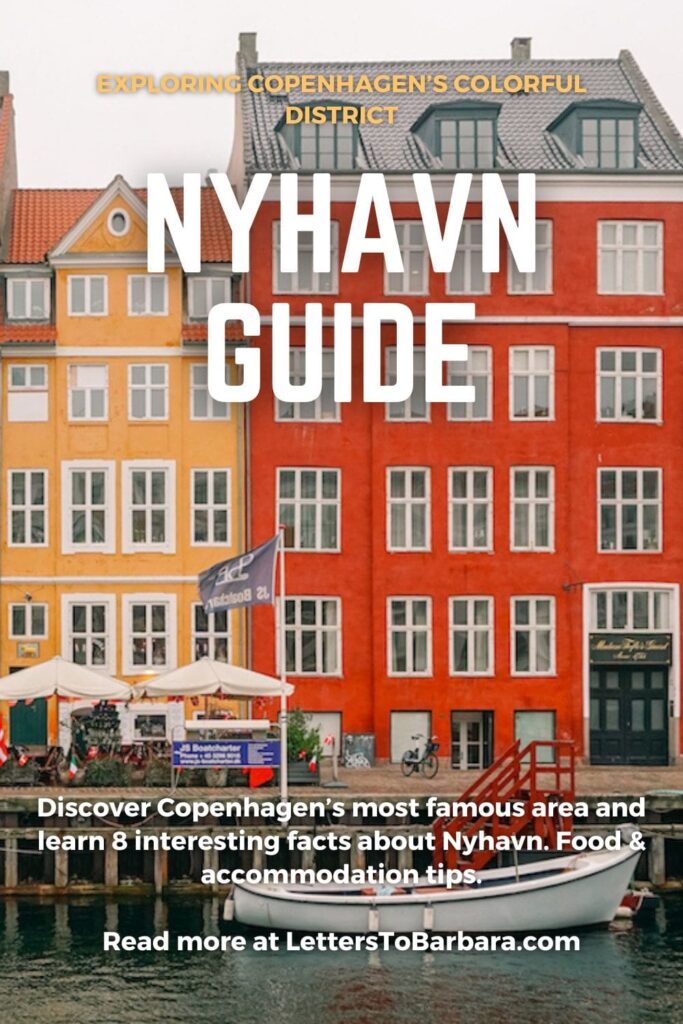
Sharing is caring. Share this Nyhavn travel guide with your friends.
Last Updated on April 13, 2024 by George Pavlopoulos



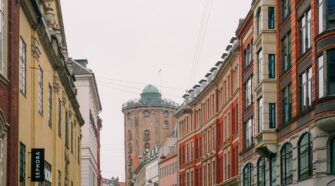
No Comment